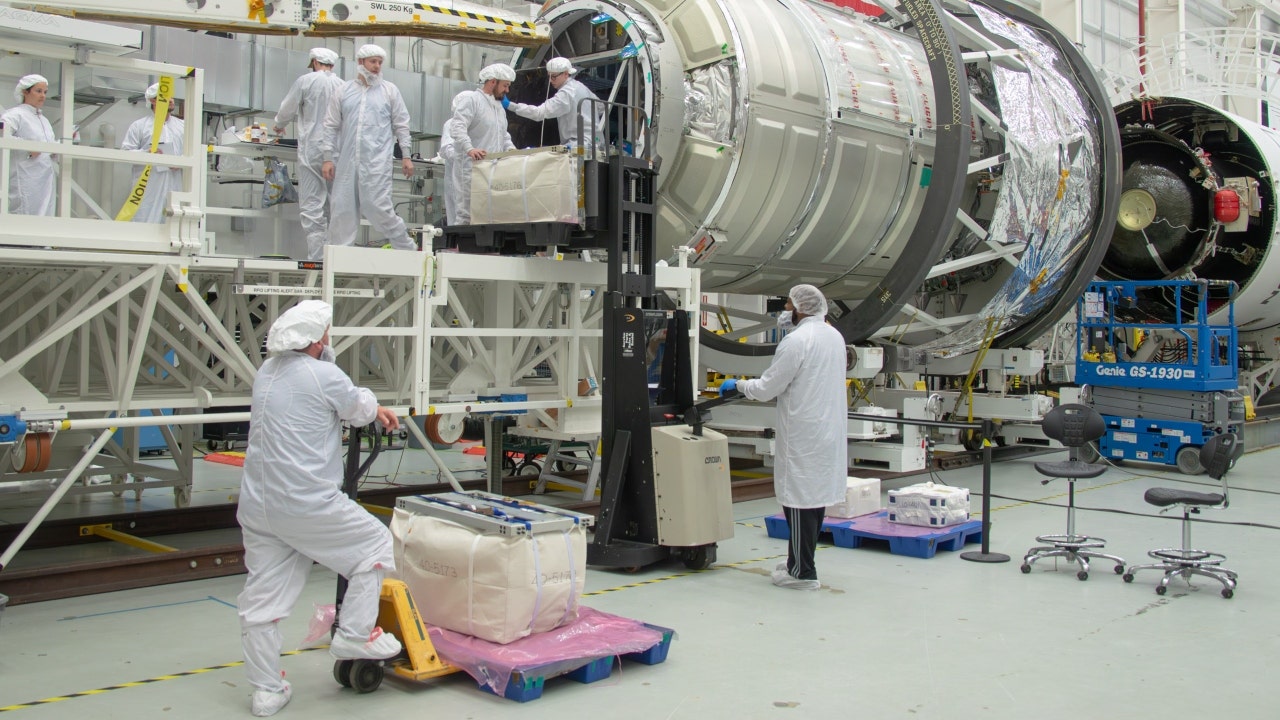Purdue University sent an innovative experiment to the International Space Station to gather valuable data on the effects of reduced gravity on condensation. The experiment was launched onboard Northrop Grumman’s 19th commercial resupply services mission, carried by an Antares 230+ rocket from NASA’s Wallops Flight Facility in Virginia. The NG-19 spacecraft is anticipated to dock with the space station early Friday morning.
Among the science investigations and cargo weighing over 8,200 pounds on the Cygnus cargo spacecraft, a module will conduct the second experiment of the Flow Boiling and Condensation Experiment (FBCE). Since August 2021, FBCE has been collecting data on the orbital laboratory. This experiment aims to gain insights into how condensation works in a reduced-gravity environment.
Last summer, mechanical engineering professor Issam Mudawar and his students successfully completed the first experiment, which focused on measuring the effects of reduced gravity on boiling. With the arrival of additional components on the NG-19 spacecraft, researchers will be able to conduct the second experiment, further advancing their understanding of condensation in reduced gravity.
Both modules for FBCE will remain in orbit until 2025, allowing for continuous data collection and analysis. The research conducted by Mudawar and his team has the potential to revolutionize heat and cooling systems in extreme environments like the moon, enabling the construction of space habitats.
Mudawar emphasized the importance of this research, stating, “We have developed over a hundred years’ worth of understanding of how heat and cooling systems work in Earth’s gravity, but we haven’t known how they work in weightlessness.” Collaborating with NASA’s Glenn Research Center, Mudawar’s lab dedicated over a decade to developing the FBCE hardware that can accommodate the space station’s Fluids Integrated Rack.
The results of this research have far-reaching implications, not only for future exploration on the moon or Mars but also for spacecraft traveling long distances. Humans will need heat and air conditioning systems that can operate in reduced gravity and withstand extreme temperatures in order to live and work in space. Additionally, the understanding of how reduced gravity affects the flow boiling behavior of cryogenic propellants can pave the way for spacecraft to refuel in orbit.
The data collected from this experiment has significant applications in advancing space technology and exploration. It could revolutionize the construction of space habitats and allow for longer space missions. Furthermore, it has the potential to streamline spacecraft refueling processes, enhancing the efficiency and capabilities of future exploratory missions.
Julia Musto, a reporter for Fox News and Fox Business Digital, provided this informative content.
Denial of responsibility! VigourTimes is an automatic aggregator of Global media. In each content, the hyperlink to the primary source is specified. All trademarks belong to their rightful owners, and all materials to their authors. For any complaint, please reach us at – [email protected]. We will take necessary action within 24 hours.


